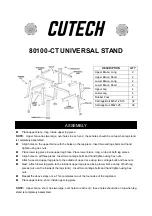
©2008 The Tod Point Group
www.TheTodPointGroup.com
Page
3
A key missing feature is synchronous replication. When and if Sun delivers this feature,
we expect its use must be carefully managed and doubt the VSM subsystem has
enough power to handle many cases.
Unlike IBM, a tape volume’s location is not virtualized. Although VSM can manage a
limited number of copies of a tape volume, it is up to the user to specify and track.
System Comparison
See Table 1 at the end of this report for a comparison of features. For comparison
purposes, we have used the top-end systems. Below we discuss what we see as the
key differences:
IBM 7700
As discussed earlier, IBM’s Tape Grid architecture is by far the biggest differentiator and
we will see more of its advantages as IBM rolls out future feature and function. The
switch to IP links for inter-nodal traffic has been heartily embraced by users who find it
much easier and less expensive than using FICON or ESCON channels, particularly for
wide-area applications.
IBM’s specifications and design reveal more processing power, more processors and
more channels resulting in a 20+% faster throughput than VSM5.
Sun VSM5:
Sun has struggled for years with timely FICON support and has not yet made 4-Gbps
FICON publicly available. Also, VSM5 lacks sufficient channels especially in clustered
configurations.
Performance
Leapfrog is the best way to characterize vendor-specified performance. Sun’s VSM
hardware is based on a disk subsystem design that goes back to its original 1992
Iceberg product. Though revolutionary in design, that product and its many successors
consistently failed to deliver competitive performance. As a consequence, Sun either
sold on price or would deliver two systems in place of one -- true for both the disk and
virtual tape versions. Indeed, Sun is no longer actively marketing this disk subsystem. In
addition, customers often complained that when improvements were made to the disk
subsystem version, those improvements took too long to show up in VSM.
Nonetheless, late last year, Sun finally released
software and hardware upgrades that
bring VSM5’s specifications up to and in some cases exceeding IBM’s. Not exactly a
huge leap, but worth noting provided it proves out in real world environments.
However, real-world experiences rarely match paper specifications. Workloads, block
sizes, compression ratios, read/write ratios and architectural differences greatly impact
the performance experience. IBM’s TS7700 has a traditional front-end, controller, back-
end design where hosts/servers talk to the front end and real tape drives talk to the
back end. VSM does not use this design. Instead, there is only one set of channels that
must be divided and dedicated to hosts, real tape drives, local cluster links and remote
links. This can result in both under and over provisioning. Under provisioning hurts
























